Top 10 Most Beautiful Waterfalls and Natural Wonders in Japan

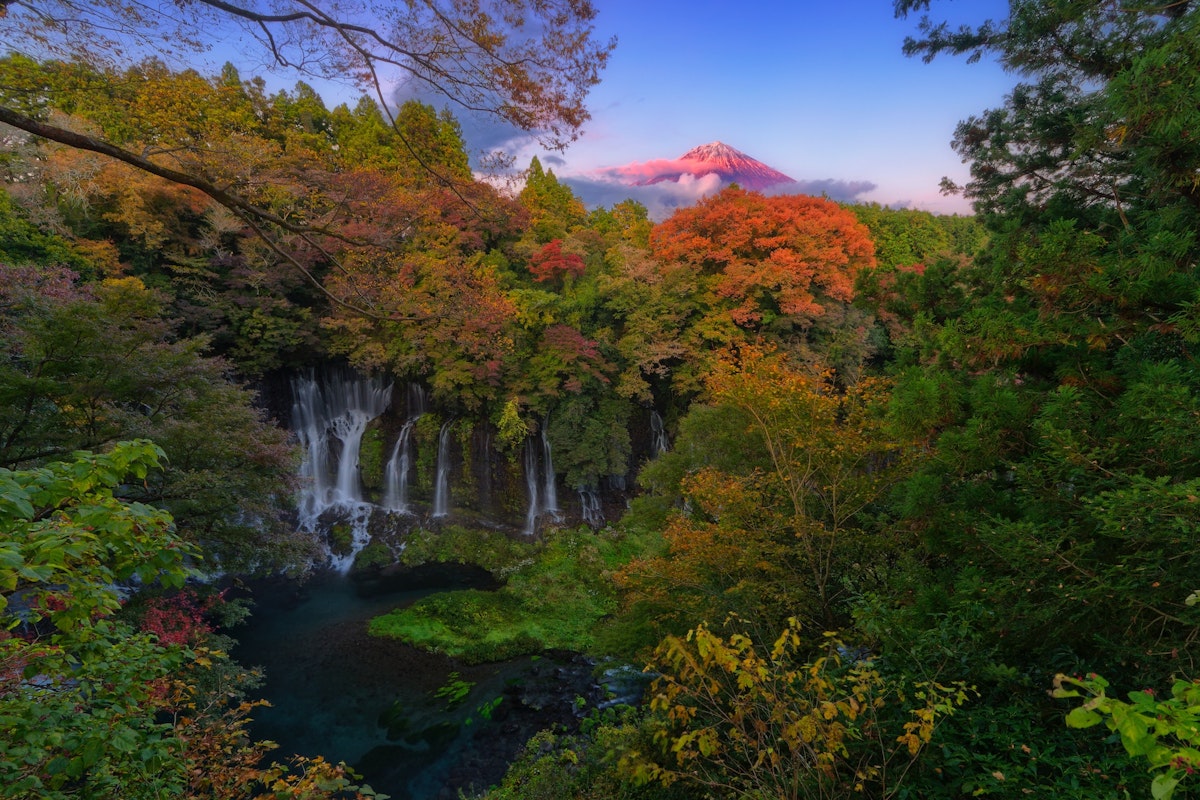
Welcome to a land where nature weaves its enchanting tapestry, captivating the hearts of explorers and wanderers alike. Japan, a country renowned for its vibrant cities and rich cultural heritage, also boasts a treasure trove of breathtaking natural wonders. Among these gems, the majestic waterfalls stand tall as nature's masterpieces, beckoning adventurers to immerse themselves in their awe-inspiring beauty. In Japanese culture, waterfalls hold profound significance, symbolizing the power and purity of nature. These cascading wonders not only captivate the senses but also offer a glimpse into the country's rich mythology and spiritual traditions. From the roaring torrents plunging into mist-filled basins to the gentle streams gracefully cascading down moss-covered rocks, each waterfall tells its own unique tale.
In this guide, we embark on a journey to explore Japan's most beautiful waterfalls and delve into the wonders of nature that lie hidden within its borders. We'll uncover the legends, unveil the hidden gems, and discover the other natural marvels that make Japan a paradise for adventure seekers and nature enthusiasts alike. So, pack your sense of wonder and join us as we navigate through the captivating realm of Japan's waterfalls and natural wonders.
The Significance of waterfalls in Japanese Culture
Waterfalls hold deep cultural and spiritual significance in Japan, transcending their role as mere natural wonders. Known as "taki" in Japanese, these cascades are revered for their symbolic representation of power, purity, and the eternal flow of life. In Shintoism, the native religion of Japan, waterfalls are considered sacred sites where gods are believed to reside.
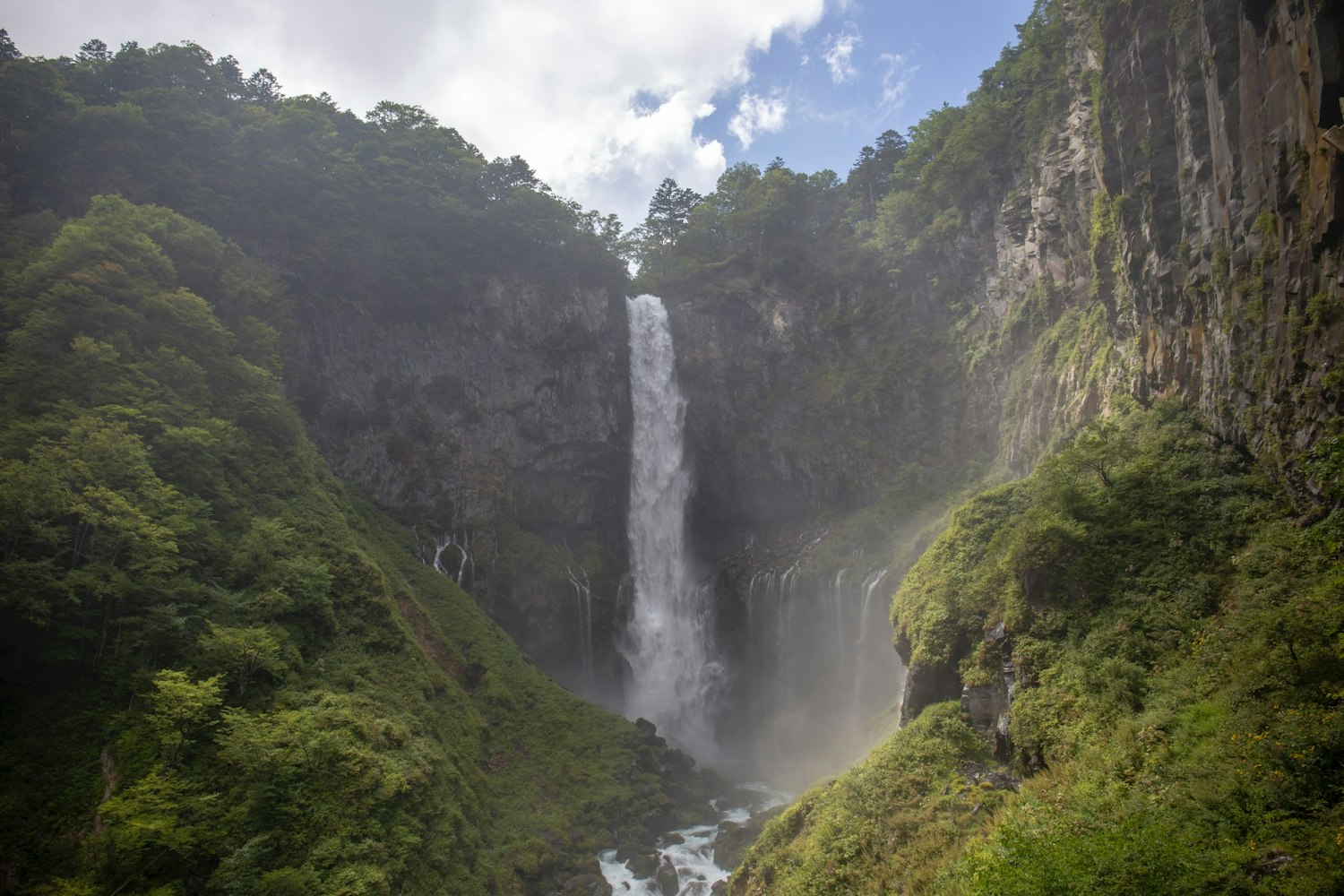
They are seen as gateways between the earthly realm and the spiritual realm, where humans can purify themselves and seek spiritual enlightenment. Many waterfalls in Japan are associated with local myths and legends, adding an air of mystique to their allure. These legends often tell tales of love, sacrifice, and the interplay between gods and humans, further enhancing the cultural importance of these majestic waterfalls.
The Iconic Three: Japan's Famous Waterfalls
1. Takachiho Falls: Where Myth Meets Reality
Tucked away in the enchanting region of Takachiho in Miyazaki Prefecture, Takachiho Falls offers a captivating blend of natural beauty and mythical allure. This waterfall holds a special place in Japanese folklore, as it is believed to be the spot where gods and goddesses gathered to perform the traditional Kagura dance, coaxing the sun goddess, Amaterasu, out of her cave and bringing light back to the world. The mesmerizing Takachiho Yokagura, a nightly performance featuring intricate dances and music, continues to keep the ancient legend alive.
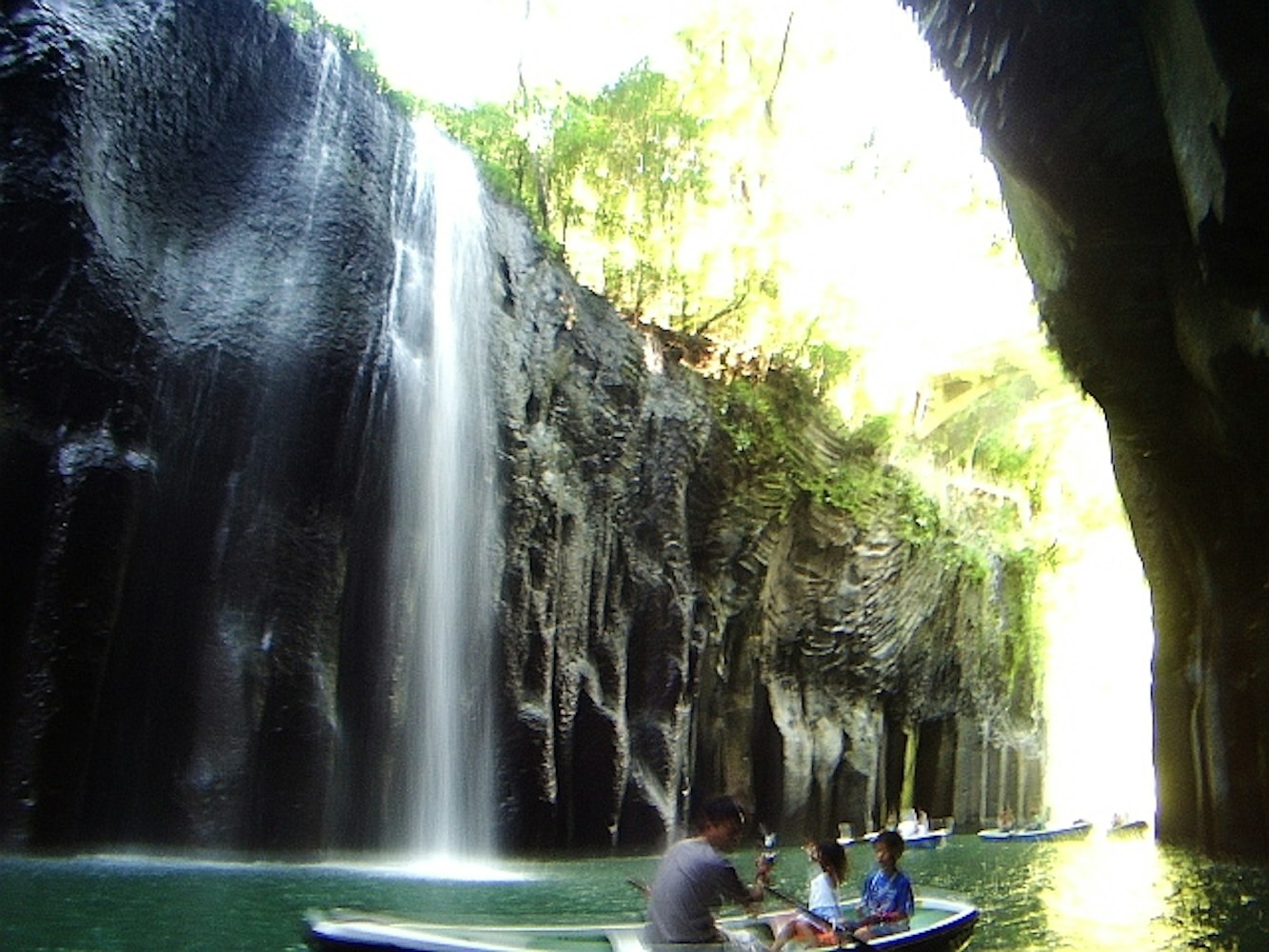
Image Credit: Wikimedia
As you approach Takachiho Falls, you'll be greeted by the awe-inspiring sight of water cascading down a two-tiered drop, surrounded by verdant cliffs covered in moss and foliage. The thunderous roar of the waterfall and the mist that fills the air create an ethereal atmosphere, transporting visitors into a realm of natural wonder. To fully immerse yourself in the beauty of Takachiho, take a boat ride along the gorge, allowing the cascading waters to guide you through the mystical landscape. Along the way, you'll be treated to stunning rock formations and the serenity of the surrounding forest, making it an unforgettable experience that seamlessly blends myth and reality.
2. Nachi Falls: A Spiritual Haven in Kumano
Nestled in the sacred Kumano region of Wakayama Prefecture, Nachi Falls is more than just a magnificent waterfall—it is a place of deep spiritual significance. Revered as one of the three sacred waterfalls in Kumano, along with the Kumano Nachi Taisha Grand Shrine and the Kumano Sanzan, Nachi Falls has been a destination for pilgrims seeking solace and divine connection for centuries. It is believed that the deity associated with water resides within the falls, making it a focal point for spiritual devotion.
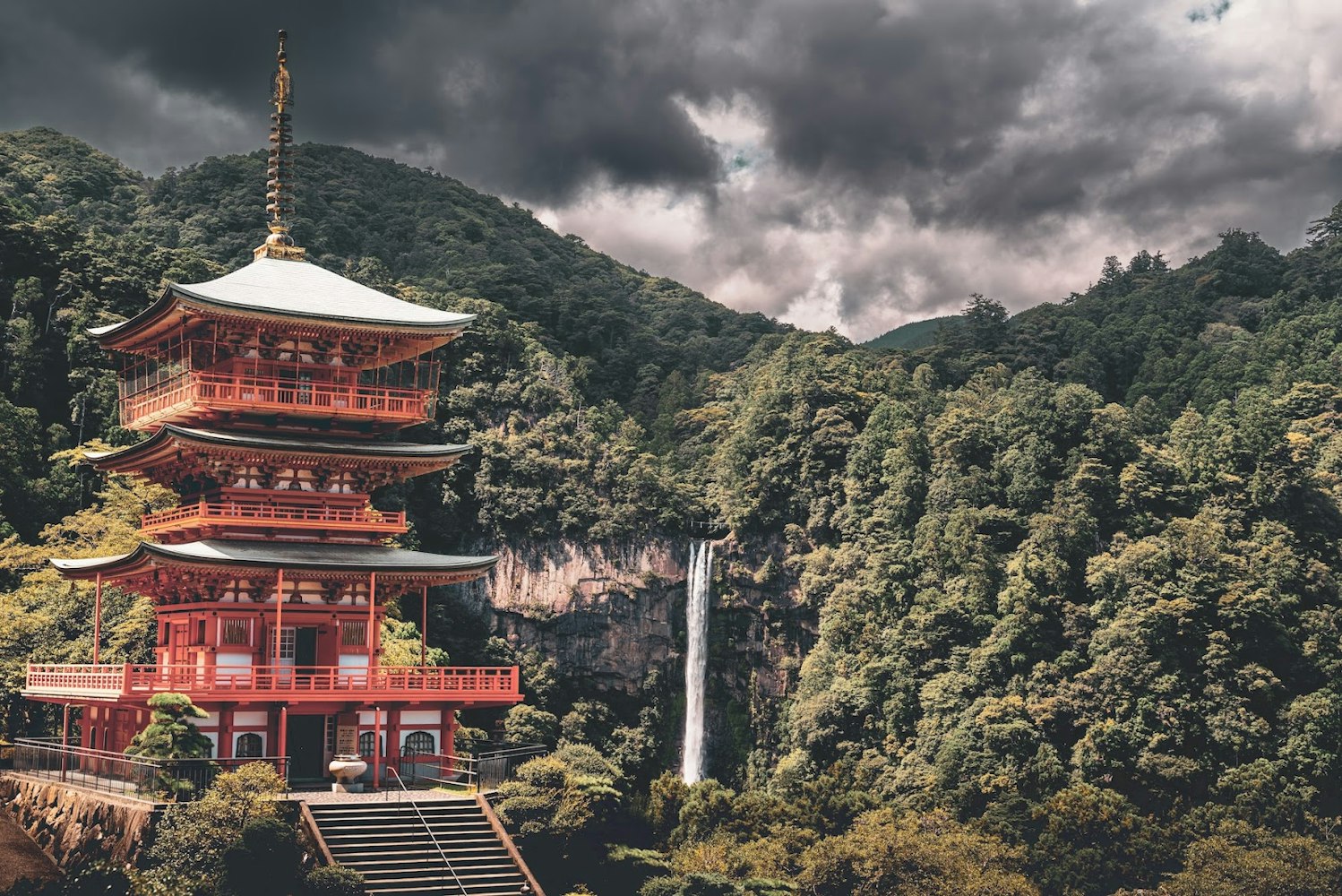
Image Credit: Ritz
When you stand before Nachi Falls, you'll be captivated by its awe-inspiring grandeur. Plummeting from a towering height of approximately 133 meters, the cascading water creates a mesmerizing display of power and beauty. The mist that rises from the pool below adds an ethereal touch, creating a serene and contemplative atmosphere. Surrounding the waterfall is a tranquil forest, perfect for quiet walks and reflection. As you ascend the steps to the nearby Seiganto-ji Temple, you'll be rewarded with a breathtaking view of Nachi Falls, the lush green landscapes, and the vast expanse of the Pacific Ocean.
3. Kegon Falls: Nature's Masterstroke in Nikko
Nestled within the pristine Nikko National Park in Tochigi Prefecture, Kegon Falls stands as a testament to nature's grandeur and the power of water. Soaring approximately 97 meters high, it ranks among Japan's tallest waterfalls, captivating visitors with its sheer height and the thunderous roar of cascading water. Kegon Falls is formed by the waters of Lake Chuzenji plunging down a precipice, creating a magnificent spectacle of nature's masterstroke.
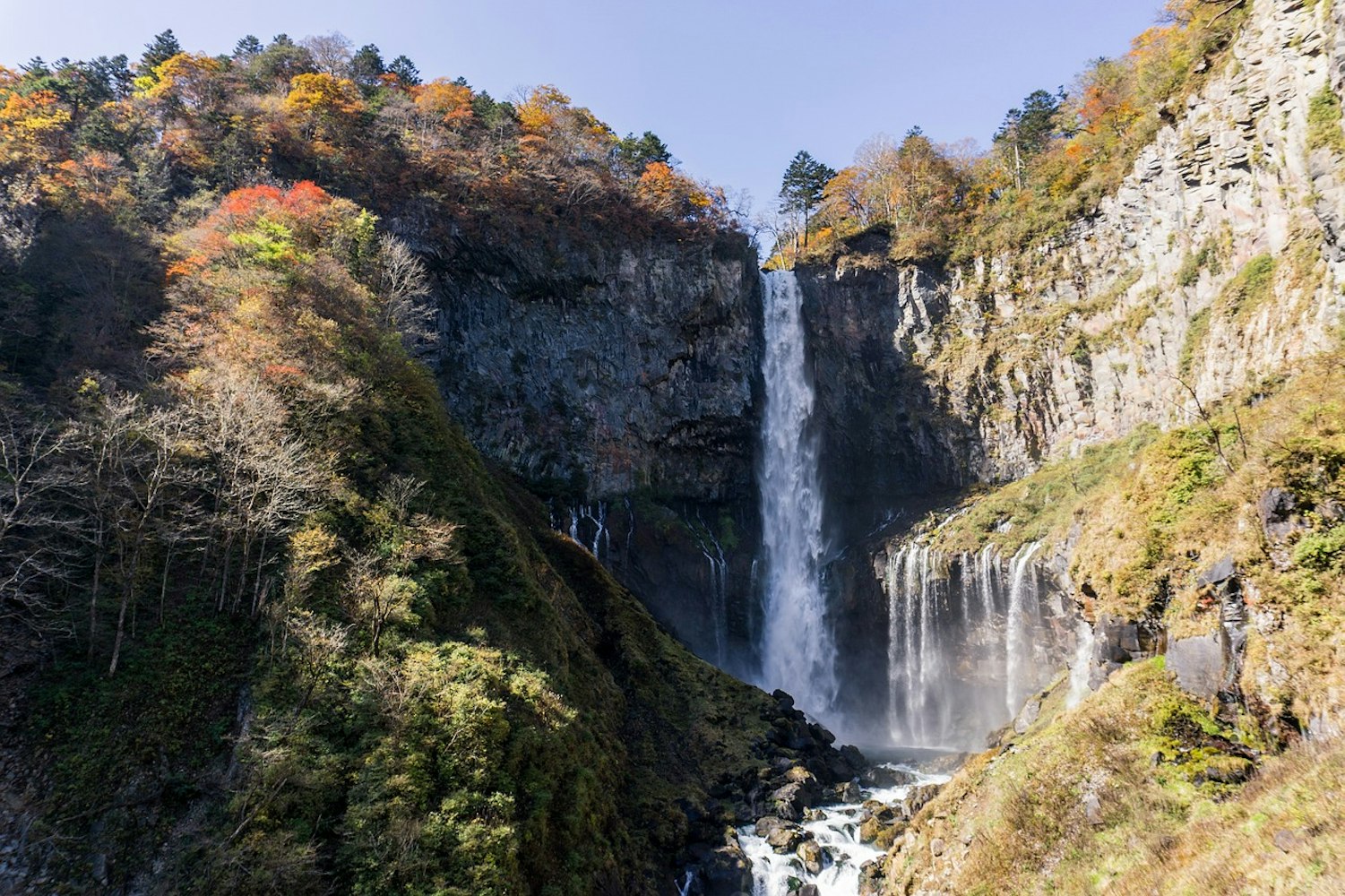
Image Credit: Hereisthailand
To witness the breathtaking beauty of Kegon Falls, visitors can head to the observation deck, which provides panoramic views of the waterfall and the surrounding natural splendor. The observation deck allows you to gaze in awe at the cascading waters as they plunge into a serene pool, creating a mesmerizing display of mist and spray. During the autumn season, the vibrant hues of red, orange, and yellow foliage provide a stunning backdrop, enhancing the visual spectacle of Kegon Falls. For a closer encounter with this natural wonder, an elevator takes you down to the base, where you can feel the power of the waterfall and experience the refreshing mist on your skin.
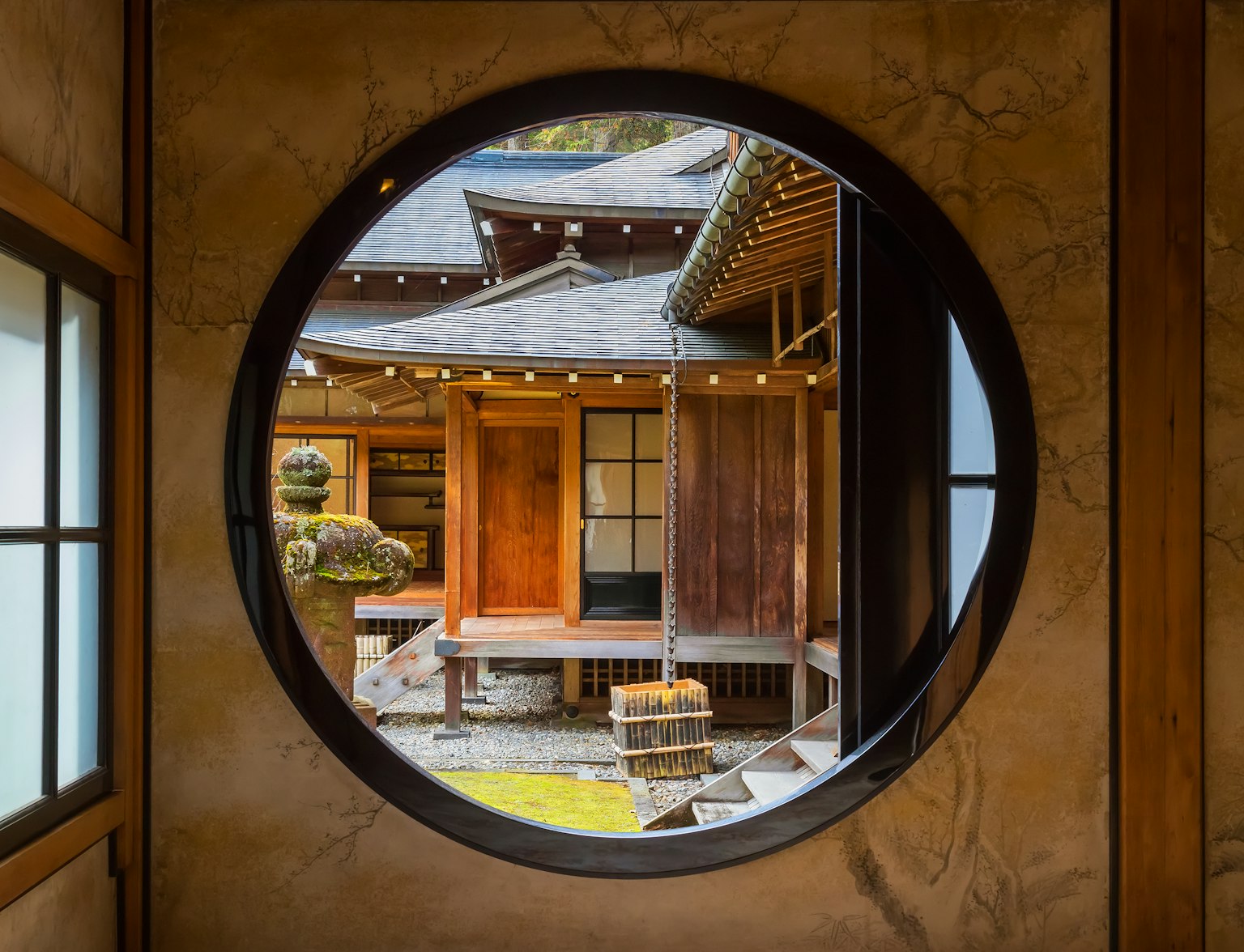
Witness the majestic Kegon Falls in Nikko.
Hidden Gems: Discovering Lesser-Known Waterfalls
4. Shiraito Falls: The Veil of White Threads
Shiraito Falls, located near the iconic Mount Fuji in Yamanashi Prefecture, is a hidden gem that exudes a delicate and ethereal beauty. Its name, Shiraito, translates to "white threads," aptly describing the enchanting sight of water gracefully descending from the rocks, resembling a veil of fine white threads. Unlike many other waterfalls, Shiraito Falls fans out over a wide area, creating a stunning curtain of cascades that span approximately 150 meters in width. This unique formation, combined with the backdrop of lush greenery, makes Shiraito Falls a captivating sight to behold.
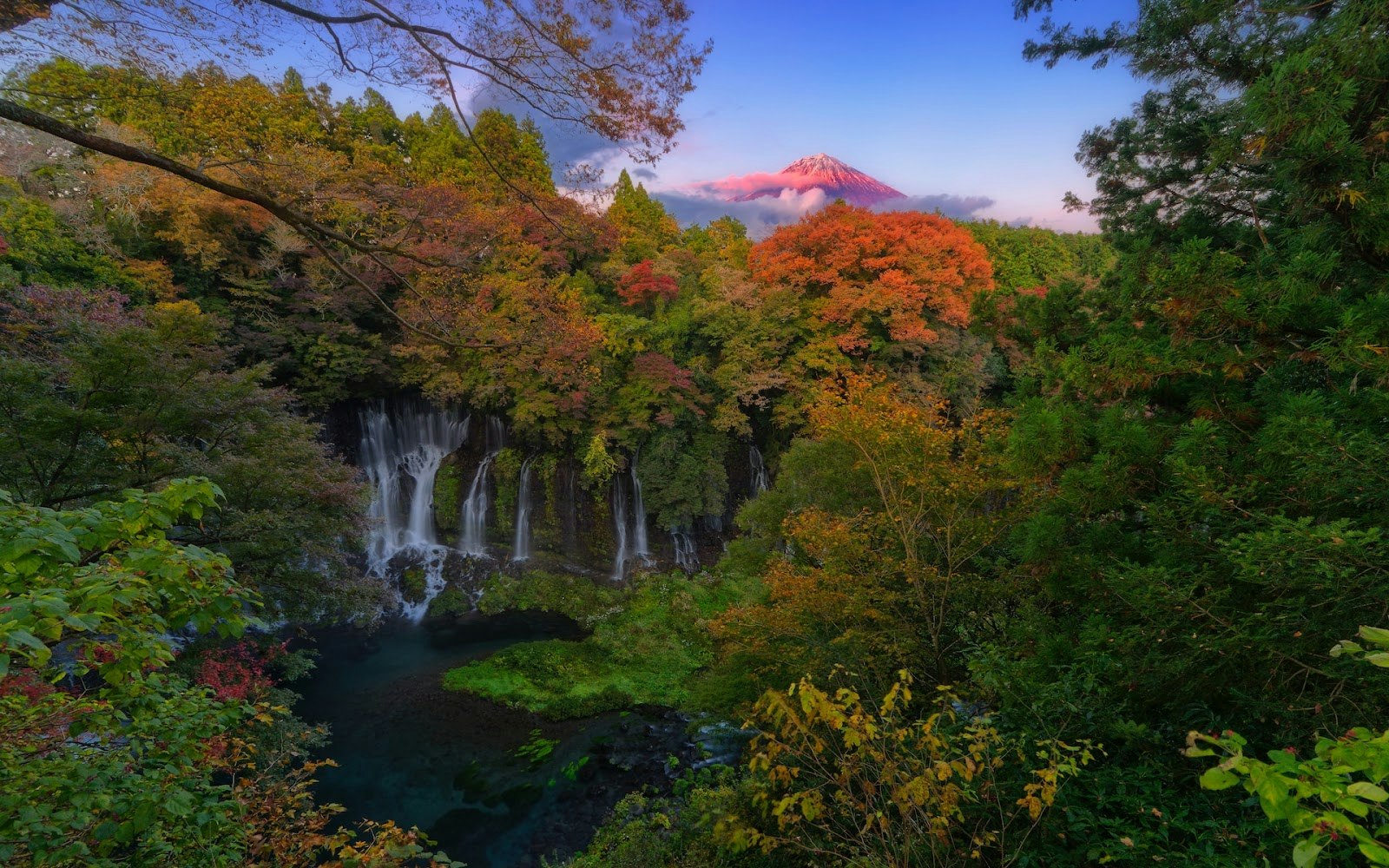
Image Credit: Takashi Miyazaki
While Shiraito Falls is undoubtedly the star attraction, there is much more to explore in the surrounding area. A short walk from the falls leads to Otodome Falls, known for its impressive 25-meter drop and the resonating sound it creates as the water hits the basin. Additionally, visitors can indulge in the panoramic views of Mount Fuji, which serves as a majestic backdrop to the falls. Whether you choose to witness the ethereal beauty of Shiraito Falls up close or soak in picturesque landscapes from a distance, this hidden gem promises a serene and unforgettable experience.

Visit the twins Shiraito and Otodome Falls with this tour.
5. Shomyo Falls: The Roar of Nature's Symphony
Deep within the rugged landscape of the Tateyama Kurobe Alpine Route in Toyama Prefecture, Shomyo Falls stands as one of Japan's tallest waterfalls and a testament to the grandeur of nature. With a breathtaking drop of approximately 350 meters, Shomyo Falls is a commanding presence that captivates visitors with its sheer scale and the thunderous symphony of rushing water. The powerful roar that emanates from the falls echoes throughout the surrounding valleys, creating an awe-inspiring experience that ignites the senses.
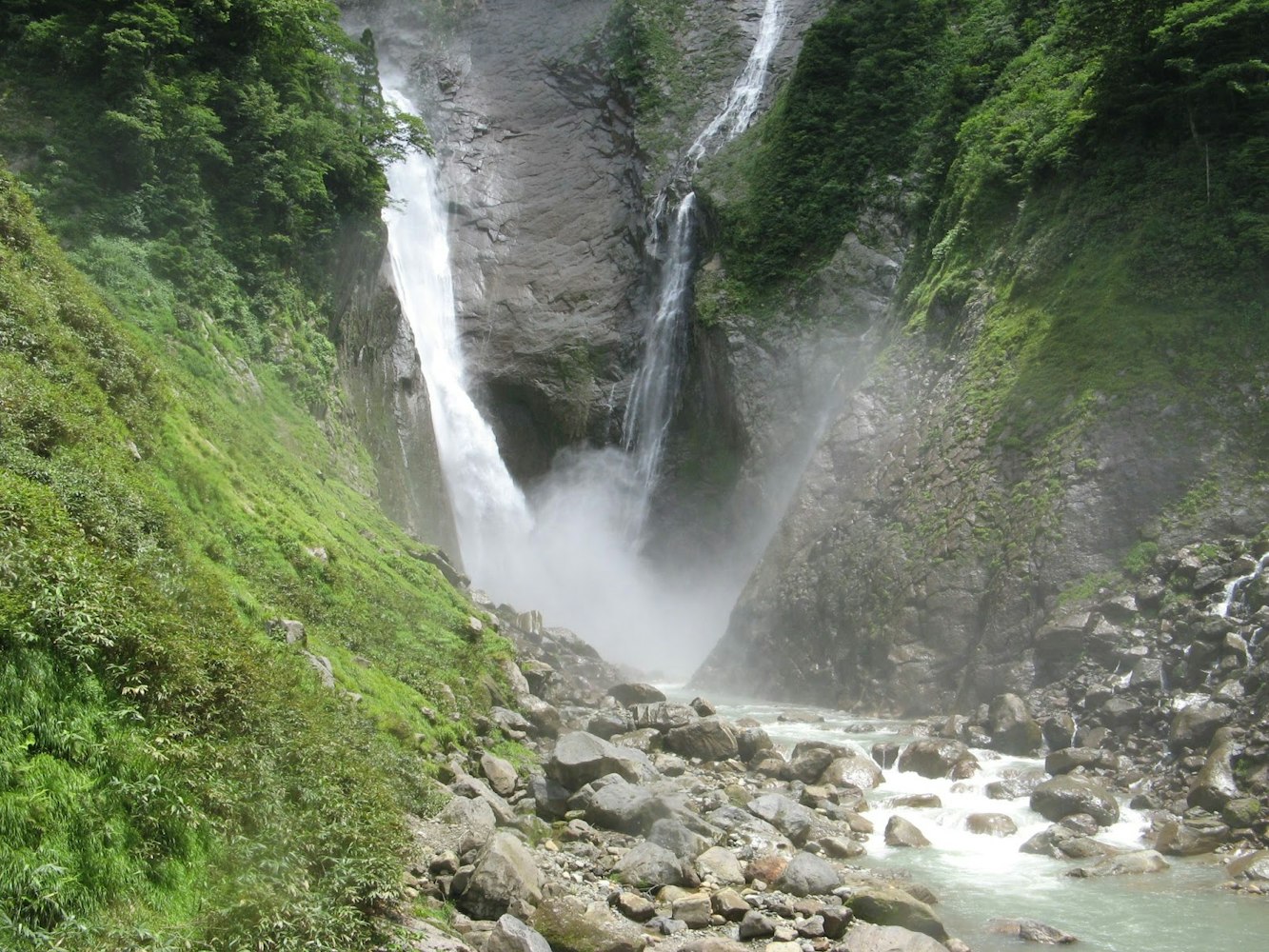
Shomyo Falls is not only an impressive natural wonder but also serves as a gateway to breathtaking alpine scenery. Visitors can embark on hiking trails that lead to panoramic viewpoints, allowing them to appreciate the waterfall from different perspectives. The Tateyama Kurobe Alpine Route itself is a marvel, offering stunning vistas of towering peaks, pristine lakes, and picturesque valleys. For those seeking adventure, a visit to Shomyo Falls is an opportunity to immerse yourself in nature's symphony and explore the awe-inspiring landscapes of the Japanese Alps.
6. Fukiware Falls: Japan's "Splitting Waterfall"
Nestled in the scenic Gunma Prefecture, Fukiware Falls, also known as the "Splitting Waterfall," showcases a mesmerizing geological formation that sets it apart from other waterfalls in Japan. The cascading water flows over a series of rock formations, creating a dramatic scene as it splits into multiple streams that resemble a fan-shaped curtain. This unique phenomenon, coupled with the surrounding natural beauty, makes Fukiware Falls a hidden gem worth discovering.
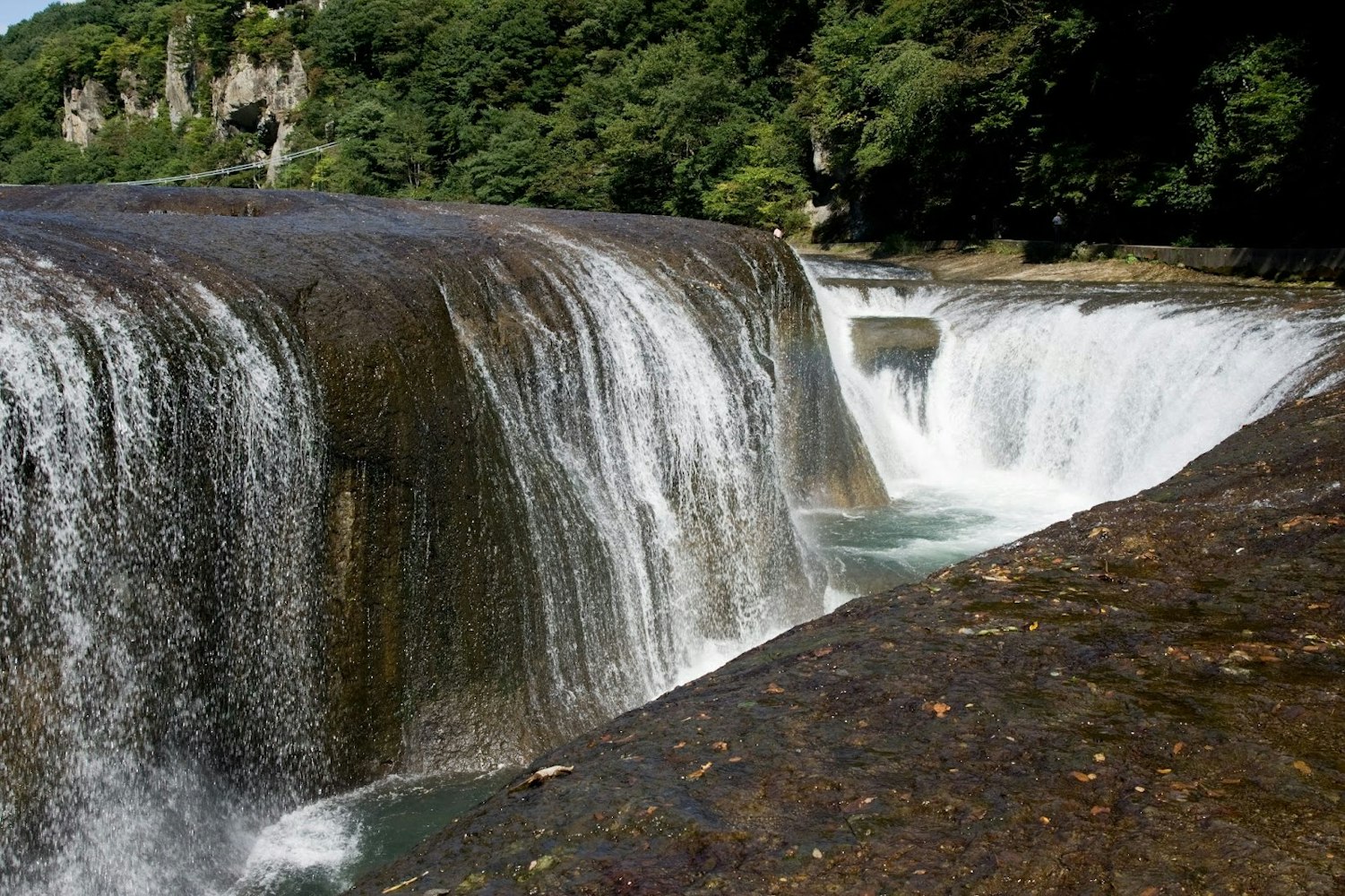
Visitors to Fukiware Falls can enjoy various viewpoints to appreciate the splendor of the waterfall. The Fukiware Suspension Bridge offers a panoramic perspective, allowing you to witness the cascades in all their glory. The nearby Fukiware-no-Taki Park provides well-maintained trails that wind through lush forests and tranquil streams, offering a serene escape into nature's embrace. Additionally, the area surrounding the falls is dotted with hot springs, making it the perfect opportunity to unwind and relax after a day of exploration.
Beyond Waterfalls: Japan's Other Natural Wonders
7. Mount Fuji: Japan's Iconic Volcanic Beauty
Mount Fuji, an iconic symbol of Japan, stands tall and proud as the country's highest peak. This majestic stratovolcano, with its perfectly symmetrical cone, has captivated the imagination of locals and travelers alike for centuries. Mount Fuji holds immense cultural and spiritual significance, often depicted in traditional art and literature. It has been a source of inspiration for poets, artists, and pilgrims, drawing people from around the world to witness its awe-inspiring beauty.
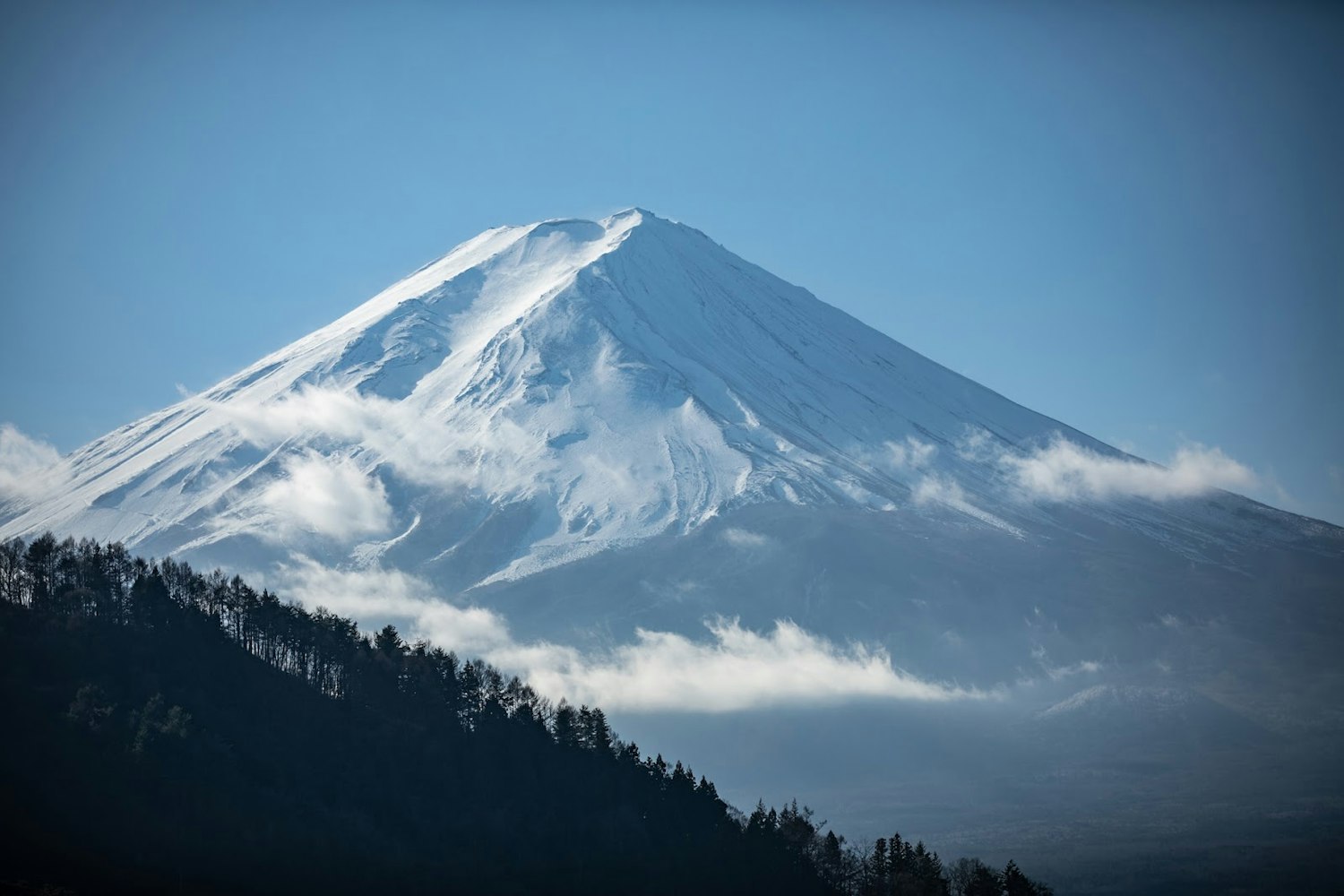
Climbing Mount Fuji is a popular adventure for those seeking a challenge and breathtaking views. The climbing season typically runs from July to September, when the weather is most favorable. Ascending to the summit offers a sense of accomplishment and rewards climbers with panoramic vistas of the surrounding landscapes, including the famous "sea of clouds" that often blankets the lower slopes. For those who prefer a more leisurely experience, various viewpoints and trails around the mountain offer opportunities to appreciate its grandeur from a distance. Mount Fuji's allure lies not only in its striking presence but also in the sense of wonder and serenity it evokes, making it a must-see natural wonder in Japan.
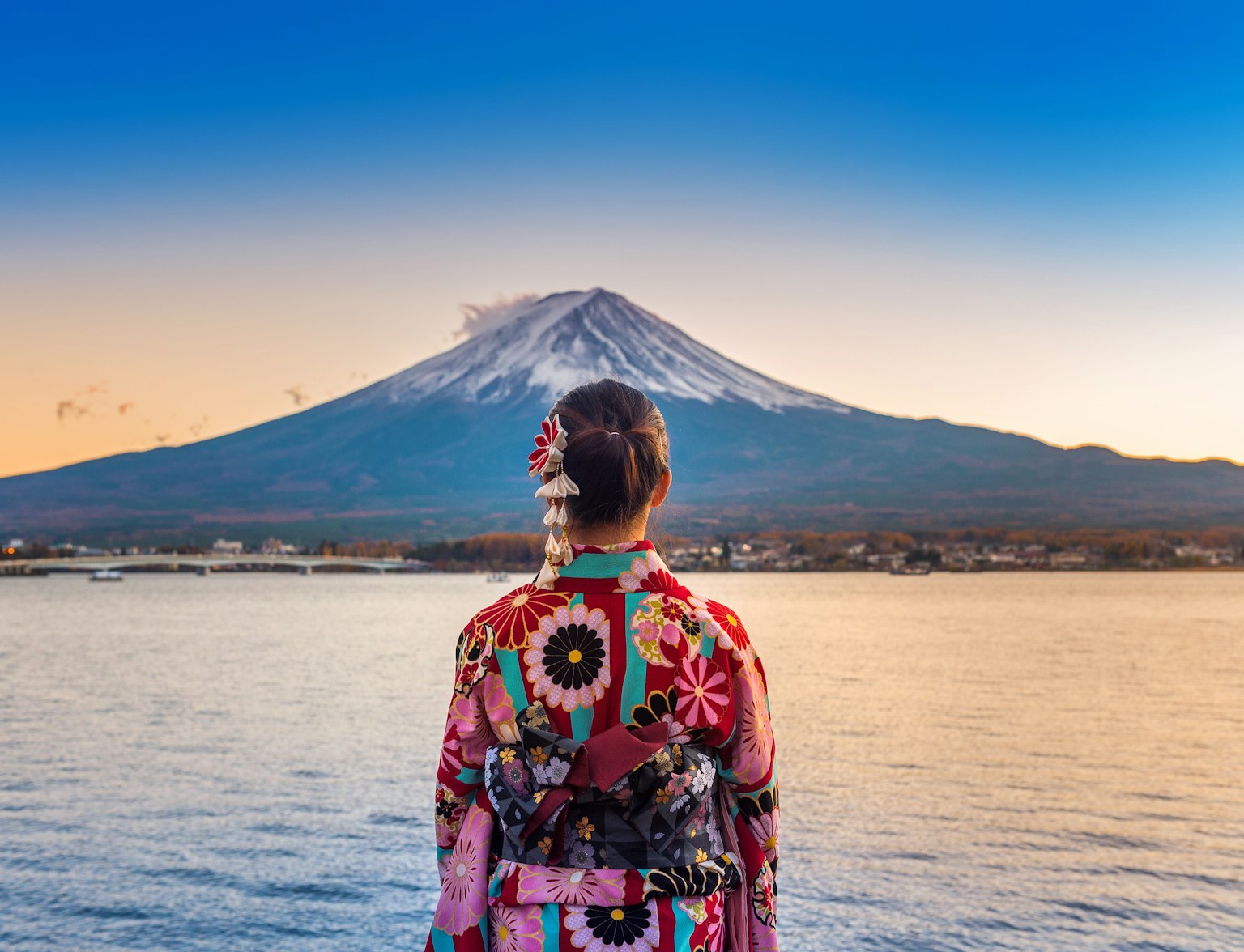
Must-try for sightseeing of Mt. Fuji.
8. Yakushima: The Enchanted Forest Island
Yakushima, a mystical island off the coast of Kyushu, boasts an enchanting forest that seems to be plucked straight from a fairy tale. This UNESCO World Heritage site is renowned for its ancient cedar forests, some of which are over 1,000 years old. The lush greenery, moss-covered rocks, and mist-filled air create an ethereal ambiance that envelops visitors as they step into this captivating realm. Yakushima's natural beauty is unparalleled, with crystal-clear rivers, cascading waterfalls, and diverse wildlife that call this enchanted forest home.
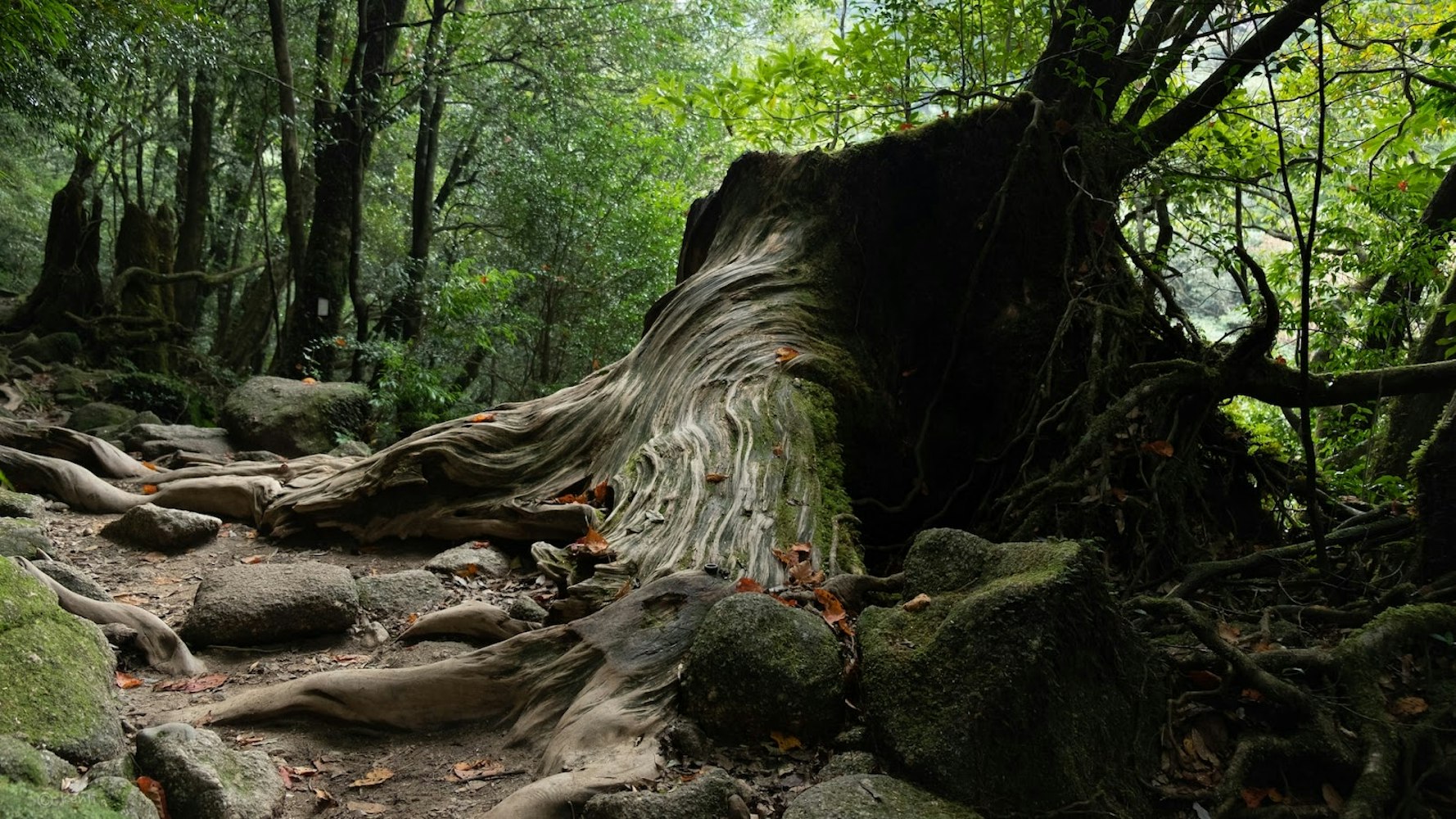
Hiking through Yakushima's trails is a transformative experience, immersing you in a world of ancient trees and serene landscapes. The Shiratani Unsuikyo Ravine, known for its mystical atmosphere and inspiring scenery, is a popular hiking spot, offering glimpses of the island's diverse flora and fauna. For nature enthusiasts, encounters with Yakushima's unique wildlife, such as the Yakushika deer and Yakushirui monkeys, are highlights of any visit. Yakushima's ability to transport visitors to a realm of tranquility and natural wonder makes it a truly enchanting destination that should not be missed.
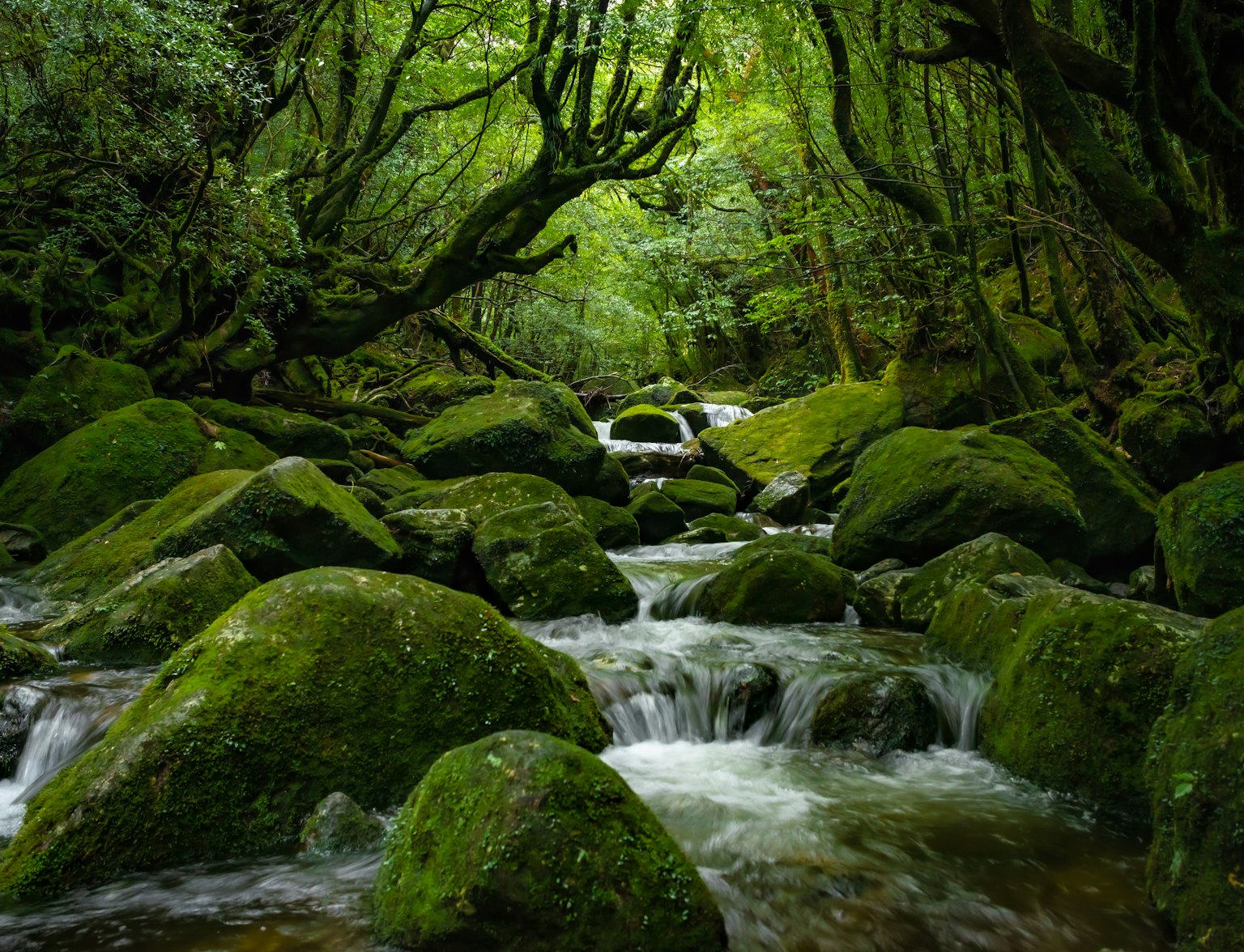
Experience the untouched beauty of Yakushima with dedicated local guides.
9. Aso Caldera: The Unpredictable Beauty of Volcanic Landscapes
Nestled in Kumamoto Prefecture, the Aso Caldera is a testament to the raw power and unpredictable nature of volcanic landscapes. This massive volcanic caldera spans approximately 25 kilometers in diameter, making it one of the largest in the world. Within the caldera lies Mount Aso, an active volcano that has shaped the surrounding landscapes over millennia. The dramatic scenery of the Aso Caldera, with its rugged mountains, vast grasslands, and steaming volcanic vents, presents a captivating contrast of beauty and danger.
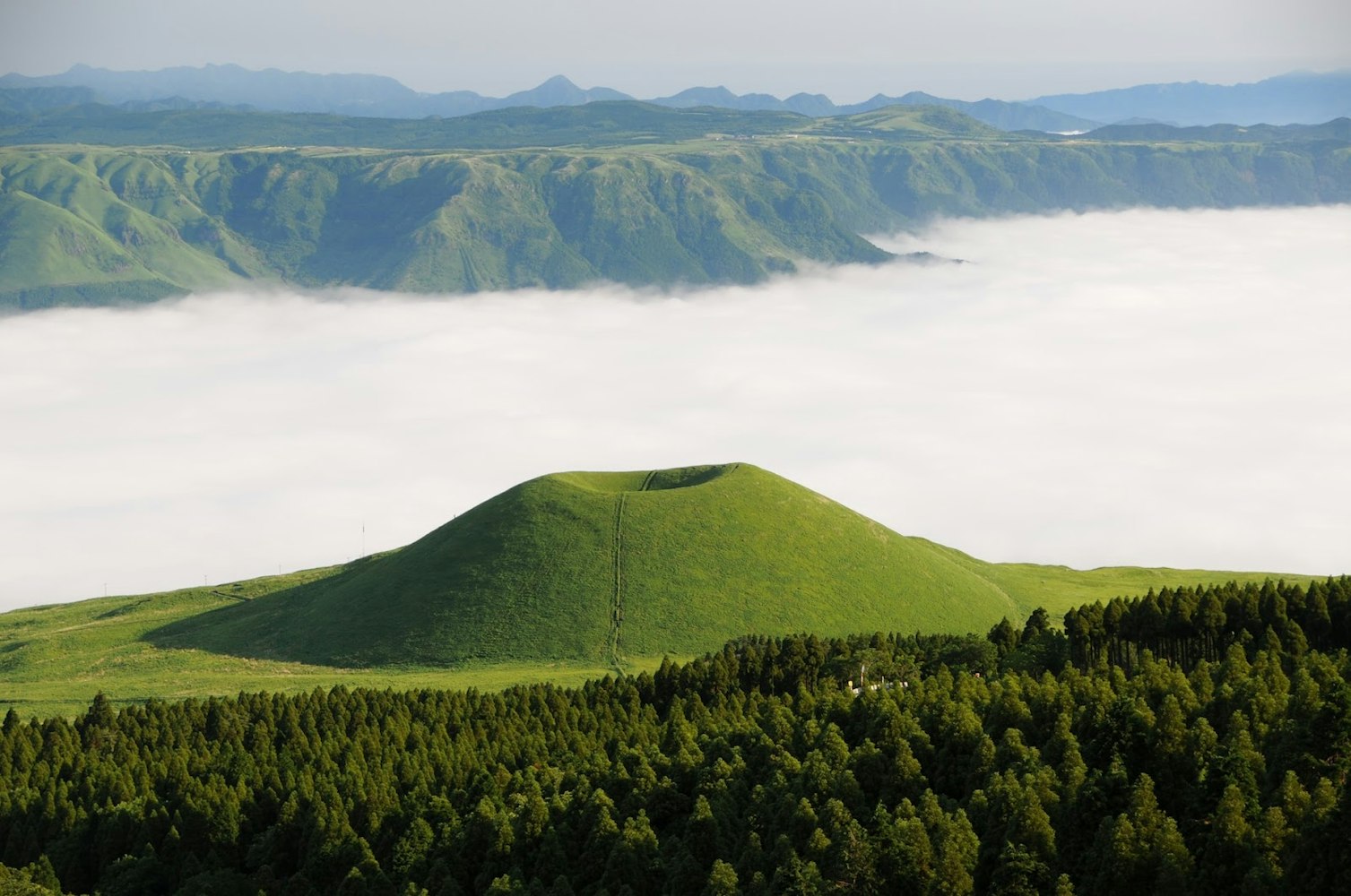
Image Credit: Kohji Asakawa
Visitors to the Aso Caldera can witness the awe-inspiring force of nature at the Nakadake Crater, one of the active vents of Mount Aso. It is possible to venture close to the crater rim, where billowing sulfuric steam rises from the depths of the Earth. The panoramic views of the caldera from various viewpoints are a testament to the immense power that once shaped this land.
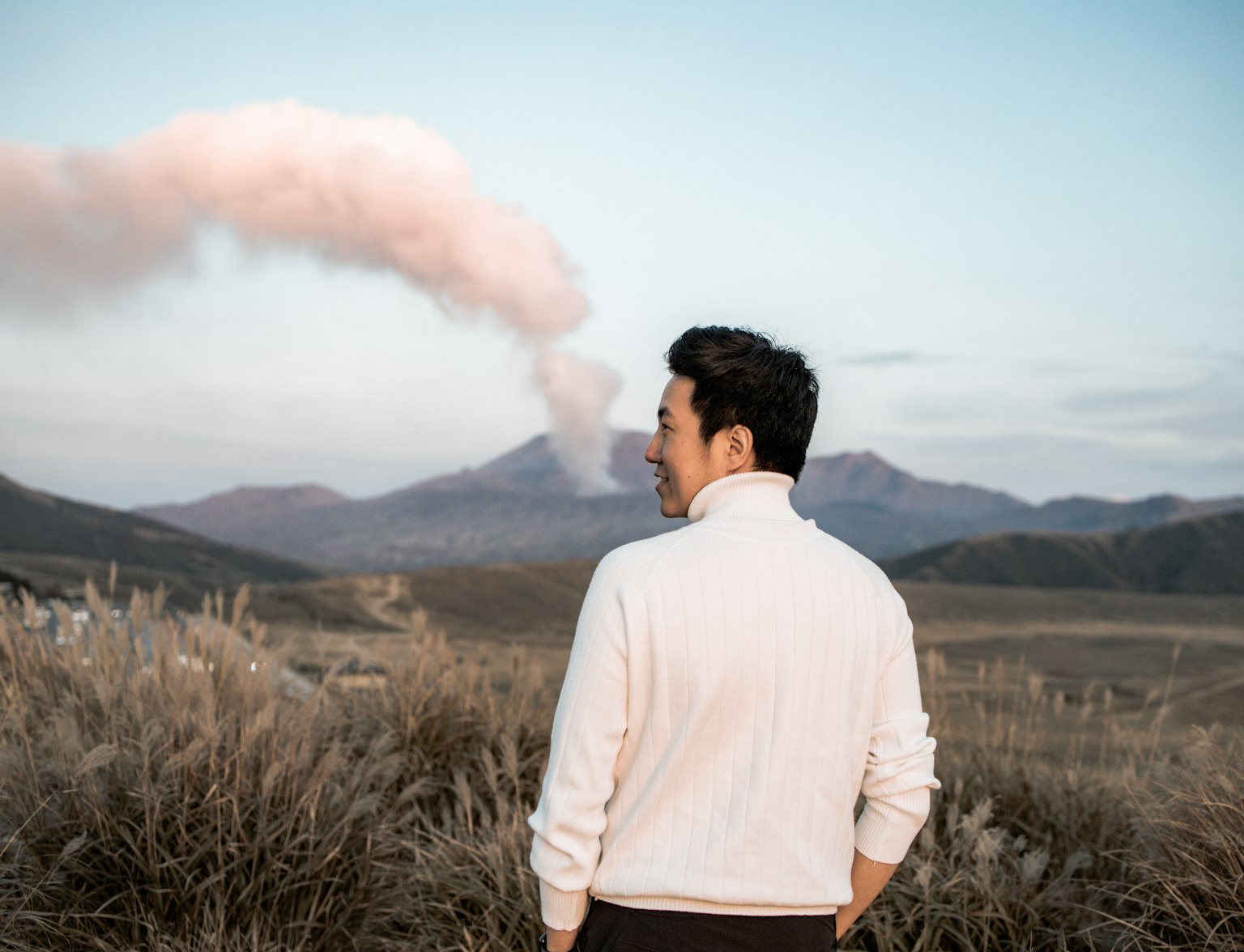
Feel the earth's activity through an active volcano.
Conclusion
Japan's waterfalls and natural wonders invite travelers to immerse themselves in the awe-inspiring beauty of the country's landscapes. From iconic falls like Takachiho, Nachi, and Kegon, to hidden gems like Shiraito, Shomyo, and Fukiware, each holds its own unique charm. These natural marvels showcase the harmonious combination of power and serenity and provide a glimpse into the rich cultural and spiritual heritage of Japan.
Whether you seek myth and folklore, spiritual solace, or simply a connection with nature, Japan's waterfalls offer an escape into a realm where the raw power of cascading water converges with breathtaking landscapes. Uncover the secrets of these natural wonders, embark on scenic hikes, witness panoramic views, and experience the captivating symphony of nature. Let the allure of Japan's most beautiful waterfalls and natural wonders guide you on a journey of exploration, discovery, and a deep appreciation for the wonders of the natural world.
Frequently Asked Questions
Q: Can I swim in Takachiho Falls?
Ans: Swimming in Takachiho Falls is not allowed due to safety concerns. The powerful currents and rocky terrain make it dangerous for swimming. It is best to admire the waterfall from designated viewing areas.
Q: Is there a fee to visit Nachi Falls?
Ans: There is no fee to visit Nachi Falls itself, but there may be a small admission fee if you wish to enter the nearby Kumano Nachi Taisha Grand Shrine or access certain viewing areas. It's recommended to check for any fees or restrictions before your visit
Q: How tall is Kegon Falls?
Ans: Kegon Falls stands at an impressive height of approximately 97 meters (318 feet). Its towering stature is a sight to behold, showcasing the raw power of nature.
Q: Can I hike to the top of Kegon Falls?
Ans:: Unfortunately, hiking to the top of Kegon Falls is not possible due to safety reasons and the steep terrain. However, there are several observation points and an elevator available that provide breathtaking views of the waterfall from different vantage points.
Q: Can I visit Shiraito Falls in winter?
Ans: Yes, Shiraito Falls can be visited during winter, and it offers a stunning sight as the cascading water freezes, creating a magical icy landscape. However, it's important to be cautious of slippery conditions and follow any safety guidelines in place.
Q: Is Shomyo Falls accessible year-round?
Ans: Shomyo Falls is generally accessible year-round, but certain sections of the hiking trails leading to the waterfall may be closed during winter due to snowfall and icy conditions. It's advisable to check trail conditions before planning your visit, especially during the winter months.
Q: Can I access Fukiware Falls by public transportation?
Yes, Fukiware Falls can be accessed by public transportation. There is a bus stop near the falls, allowing visitors to reach the area conveniently. However, it's important to check the bus schedules in advance, as they may be less frequent in more remote areas.
Q: Are there any restrictions on photography at these waterfalls?
Ans: Generally, photography is allowed at these waterfalls for personal use. However, commercial photography or the use of tripods may require special permission or permits. It's always respectful to follow any signage or guidelines in place and be mindful of other visitors while capturing your memorable moments.



